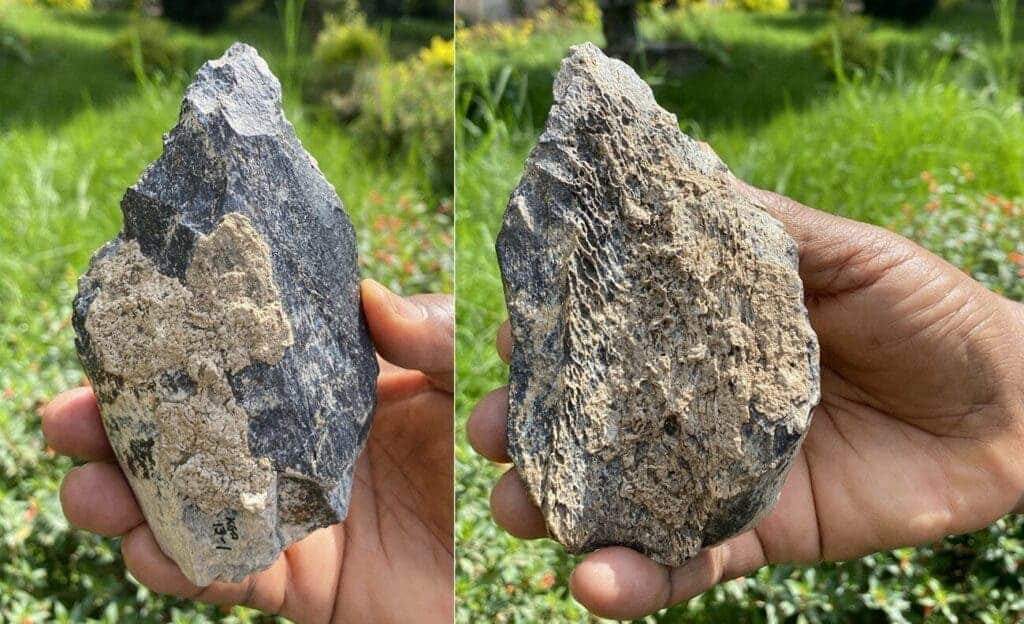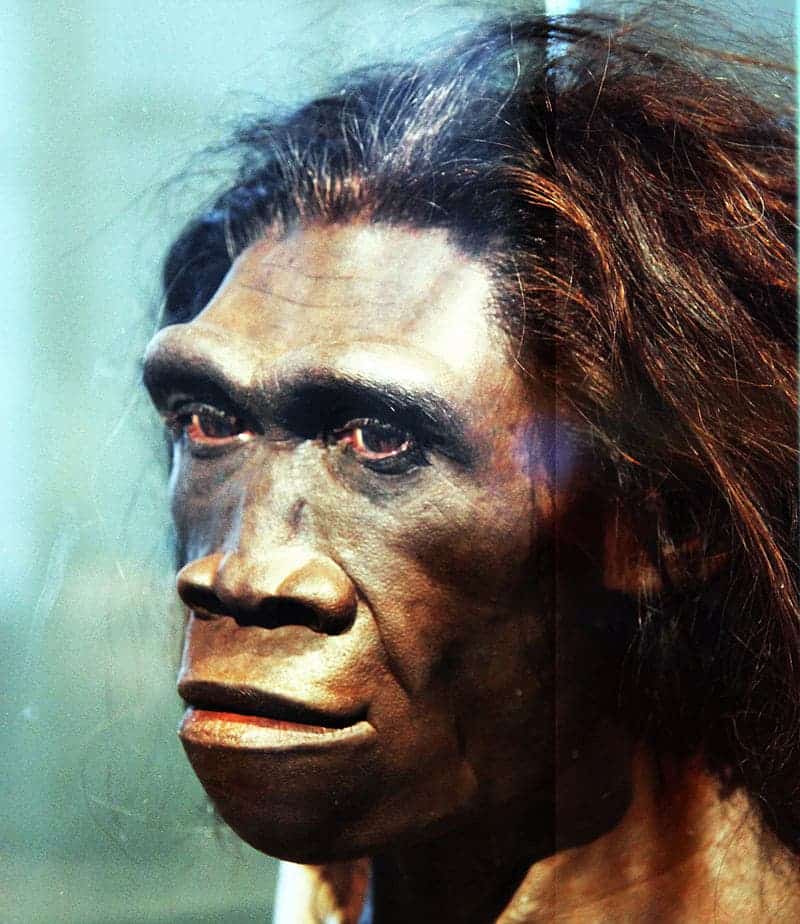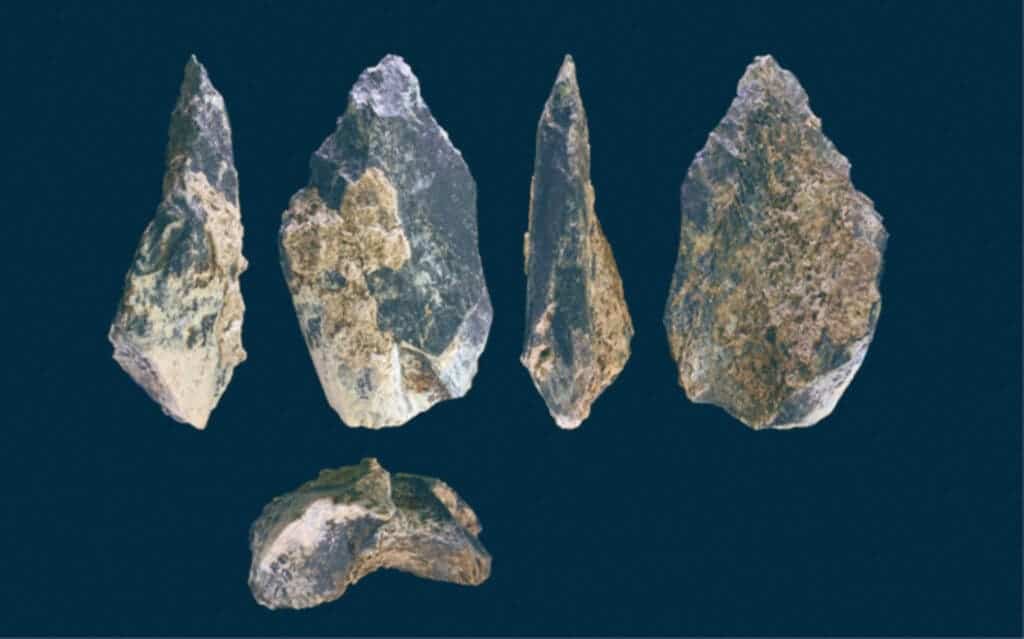
Hand axes are some of the most versatile tools humans have ever invented. You can use it to chop wood for a fireplace, butcher freshly caught game, defend against predators and other humans, or build other tools with it.
It’s no wonder then that hand axes are also the most common artifacts archaeologists and anthropologists have found, the earliest dating between one and two million years ago.
Prehistoric hand axes are typically made from stone, but researchers doing fieldwork at the Konso Formation in southern Ethiopia found one that was made out of a large chunk of bone. Turns out that the bone is actually the femur of an ancient hippotamus.
The Konso hand axe is only the second such tool completely made out of bone. Judging from the sediments from which the artifact was unearthed, the femur hand axe is around 1.4 million years old.
In all likelihood, this timeline suggests that the tool was manufactured by Homo erectus — the first hominin to have fully walked upright. They also shared many other features with modern humans, which enabled them to be quite successful, spreading from Africa across Europe and Asia.
An intelligent and skilled toolmaker

Homo erectus had little body hair, so it was able to shed heat and be active throughout the day. The appearance of the vestibulocochlear apparatus — a part of the inner ear involved in balance and movement present in modern humans — allowed H. erectus to see distant targets well.
These adaptations may have heralded a change from scavenging to hunting in our species’ lineage. This is further evidenced by the hominin’s smaller gut and teeth relative to its predecessors, which suggest it had a better diet. Bone protein released during cooking suggests that H. erectus also knew how to make a fire or at least use naturally-occurring fires.
This hominin grew tall and had long legs, making it a completely terrestrial creature. It may have used a proto-language, as indicated by the vertebrae fossils of Homo erectus georgicus, a sub-species of Homo erectus.
Like the familiar stone hand axes, the Konso was likely fashioned in the same way, by chipping bits off of the femur bone until the edge became sharp. The axe is about 13 centimeters long and has an oval shape, according to the University of Tokyo paleoanthropologist Gen Suwa, who led the new study along with his colleagues from Japan, Ethiopia, and Hong Kong.
“This bone handaxe shows that at Konso, not only in lithic technology, but also in bone modification, Homo erectus individuals were sufficiently skilled to make and use a durable cutting edge,” the scientists said.
Research conducted previously found that ancient hominins like H. erectus manufactured such hand axes using a single sharp blow to create a new tool edge. This edge would then be honed through repeated chipping with a bone or stone hammer. As many as 44 secondary flake scars were identified by the researchers, which ranged in size from 3 cm to less than 1 cm.
“Both the distribution pattern of flake scars and the high frequency of cone fractures are strong indicators of deliberate flaking,” the researchers wrote in their study published in PNAS.
The axe was likely used for butchering animals

Whoever was the toolmaker, he must have been quite skilled. There’s a reason why so few bone tools have been recovered by archeologists. Besides being less able to withstand the degradation of time, bone requires more craftsmanship to shape into a tool than stone does. The toolmaker has to find just the right bone for the job and then carefully apply proper blows and chipping so the bone doesn’t break entirely.
“The handaxe is made with substantial sophistication as evidenced by, for example, the large number of small, well-controlled cortical side removals in forming the handaxe-like shape,” the researchers said.
“The finer bifacial flaking made a relatively straight edge in a side view, which enables efficient cutting.”
The bone hand axe bears evidence of wear, suggesting it had been used. The edge is rounded in places near the tip, similar to stone tools used for butchering animals.
It’s not clear why the toolmaker would choose bone over stone, despite the latter being available in ample amounts in the area. Nevertheless, we’re grateful now that such an artifact has withstood the test of time, highlighting the intelligence of H. erectus, who may very well be a direct ancestor of our species.
“The discovery of the finely made Konso bone handaxe from 1.4 million years ago shows that refinement of flaking technology in the early Acheulean involved both stone and bone and provides additional evidence of the technological and behavioral sophistication of African Homo erectus through Acheulean times,” the authors said.






